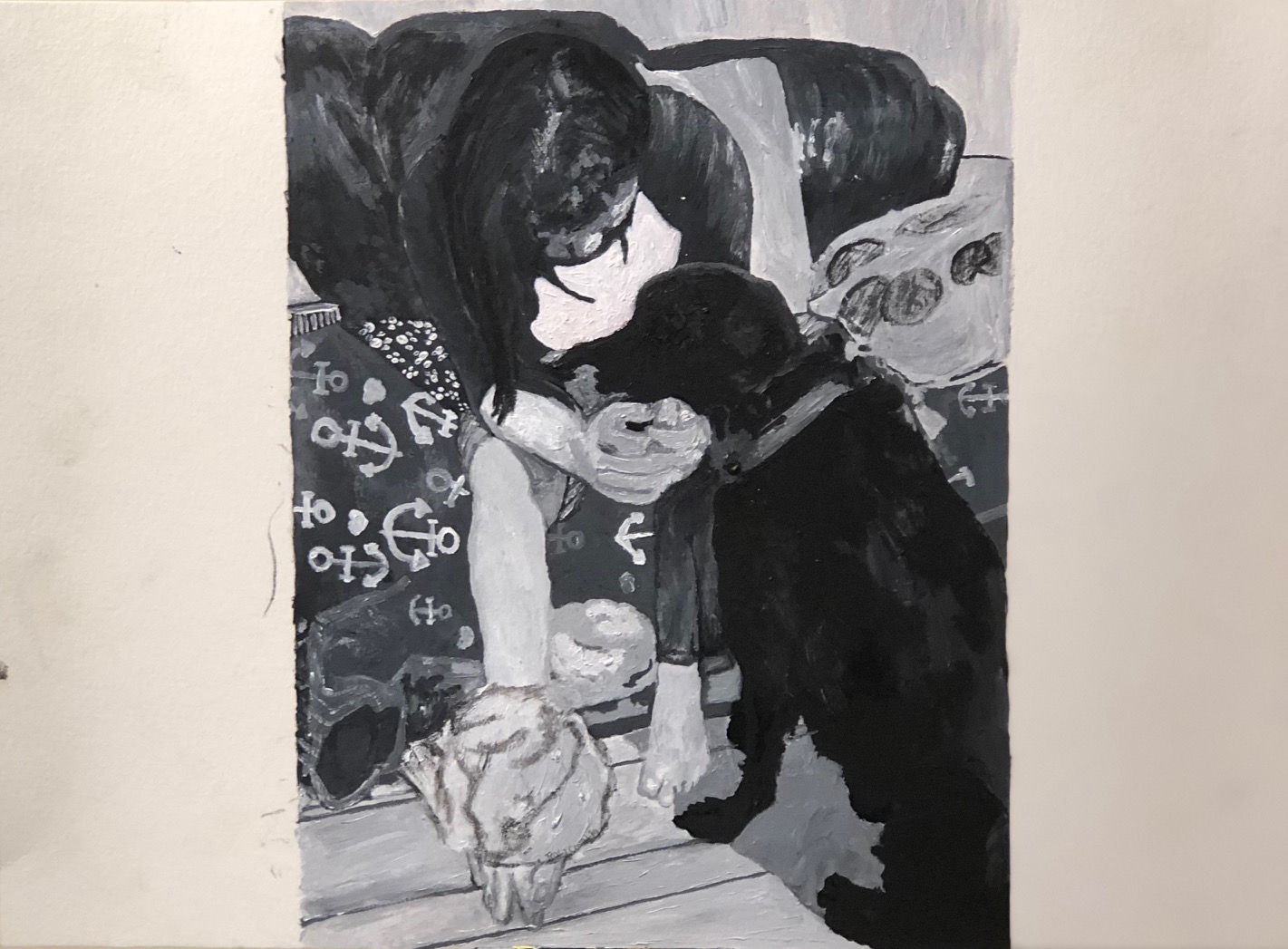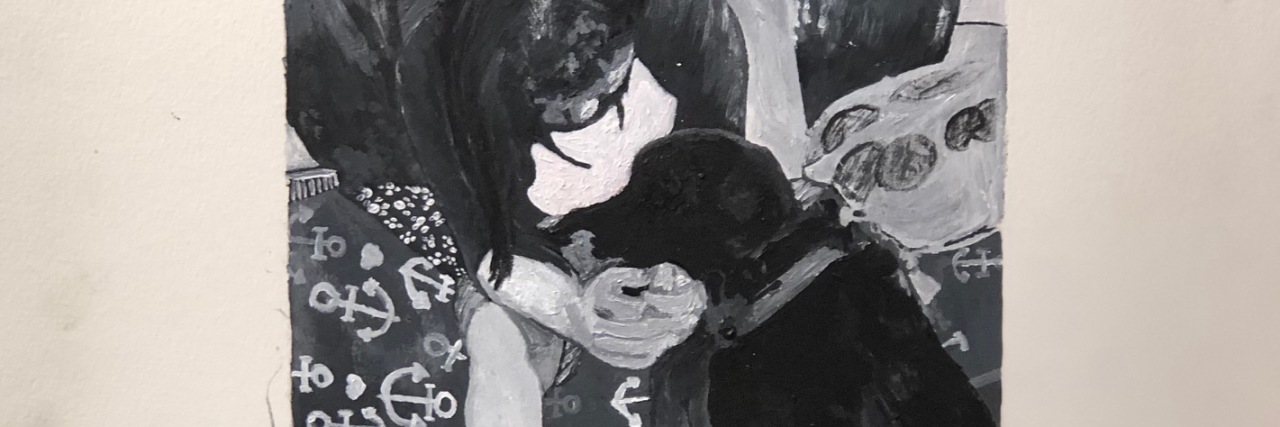I describe my medical journey as a 5,000 piece puzzle. It’s been slowly pieced together, and finally the puzzle is completed. I look at this portrait and it captures so many emotions that have been going through my head. This photo was originally taken on October 31, 2018; I was eight days post-op from neurosurgery where my spinal cord was untethered. The painting was completed on February 9, 2019. This photo has many hidden meanings and tells a powerful story.
This story focuses on a 27-year-old woman after she meets with her neurosurgeon. She learned the pathology reports from her neurosurgery, confirming she was born with spina bifida and tethered cord syndrome. During that appointment, she hears her spinal cord is permanently damaged, and the spasticity is permanent as well. In 107 days, six doctors have made it clear she’s ran out of treatment options, except surgery. She has been advised to minimize how much she walks and discontinue physical therapy and occupational therapy. She is unable to keep her leg braces on for long periods of time. Both legs are resisting the braces from continuous muscle contractions. Think of a charlie horse in the back of your ankles and the arches of your feet. The spasms are so intense, and your ankles and feet are stuck in a pointed position. These braces are to prevent her ankles from getting locked in fixed contractions. Without the braces, she is unable to walk, and her legs get stuck in abnormal fixed positions.
She has been told to come to terms and accept that the wheelchair will be needed more and more. If the spasticity can’t be controlled, she will not be able to walk again. Amputation, reconstructive surgery on her legs and spine surgery are necessary. She receives apologies from her neurosurgeon; if the spina bifida and tethered cord syndrome were treated in childhood, she would not be in the situation she’s in today.
She comes home after the appointment and sits down on the couch. Tears roll down her face as reality sets in. “OMFG this is real.” Her emotions are waxing and waning. Her dog is sitting next to her, trying to console and comfort her any way he can. She feels like a failure because the lack of success she has had in her life. She feels insecurities within herself, especially that she didn’t succeed like others her age. In her eyes, this means relationships, working, living independently and furthering career goals. She feels like her life has been broken into fragments. She feels frustrated and annoyed, especially with the inability to change her medical situation; she has to learn that it’s out of her control.
She feels so much guilt, even though she is not responsible for any wrongdoing. She feels hesitant about herself. She wonders, “Am I making the right choices?” Will this ever get better?” She feels hopeless, and feels like a burden to her family and friends. She is frightened about the situation and afraid she will not be able to walk again. She’s anxious that she has run out of treatment options and may not be able to move past what has happened. She feels like this is a sick nightmare and she can’t wake up from it. She feels completely defeated.
When I look at this piece, I don’t see or feel the emotions she’s feeling. Instead, I see a woman who is thankful. She looks drained, but her body is calm. Her body language shows she’s at peace and feels free. Her spinal cord isn’t restricted and tethered; she isn’t tied down. She’s elated her voice was finally heard. Her gut instincts were right that something was very wrong with her body. She feels pride knowing her hard work advocating for herself paid off. She refused to give up fighting for her needs until she got to the proper providers. She has forgiven herself for the anger she felt towards herself, believing that this medical situation was her fault.
The anchors on the blanket depict her strength, as she refuses to sink. She has found a way to succeed in life and pursue a career: disability advocacy, and using the creative arts to share her story. She’s excited for where the next chapter in her journey of life will take her, and encouraged she can help others with their experiences. She feels fulfilled that she never gave up after many individuals told her to. She became tough as nails and refused to take no for an answer; she had no choice but learn to become resilient, which played in her favor. She’s learning and practicing being kind to herself. She has hated herself and felt like a piece of shit for so long, and now she can recognize that she needs to be kind and love herself.
The lighter colors in the painting portray the light at the end of the tunnel. She has been on a very long and dark journey, and finally she is free. If you look closely, her legs range in different light greys. Those grey colors show that she feels proud of her legs. They are deformed, but they are physically there.


